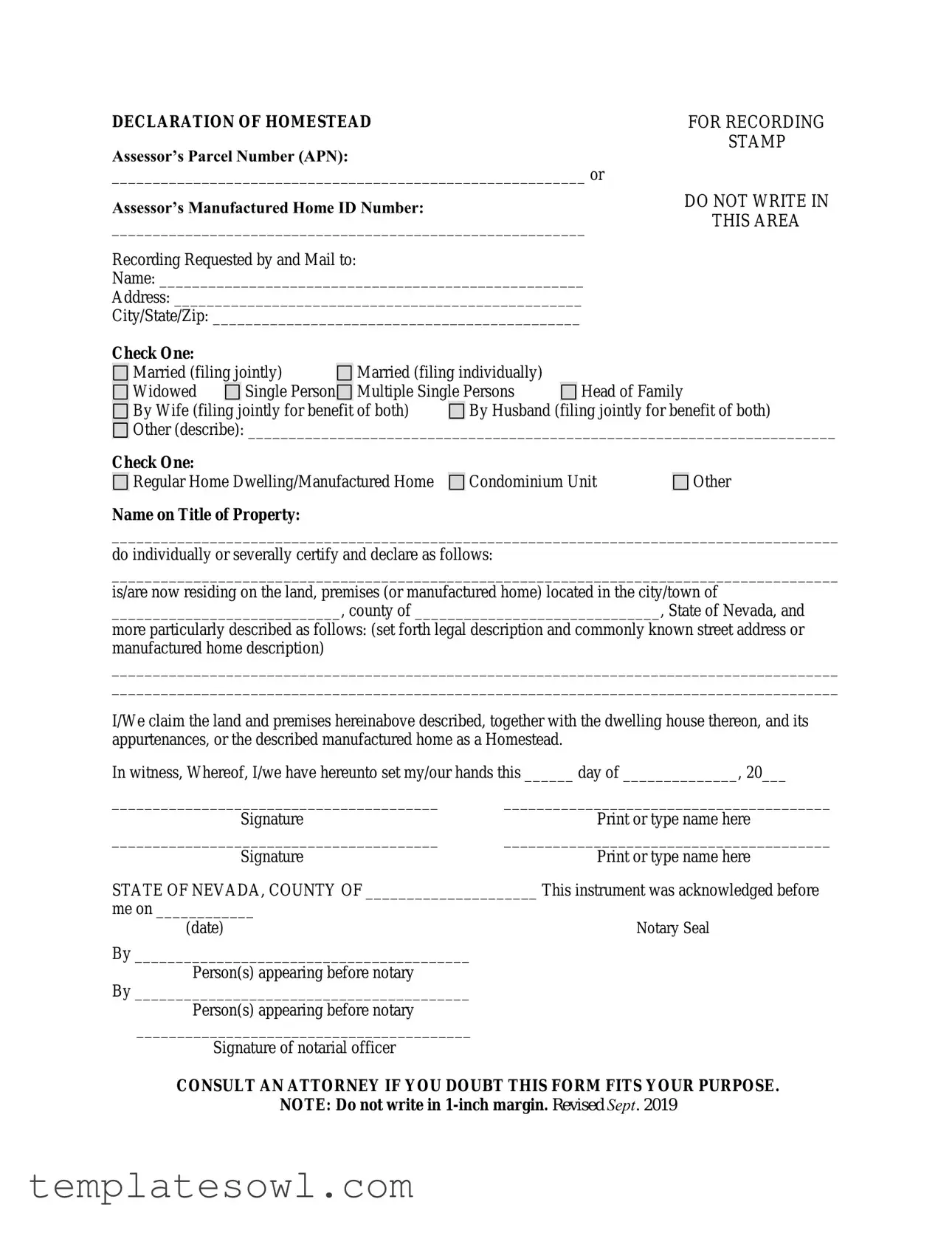What is the purpose of the Nevada Homestead form?
The Nevada Homestead form protects a homeowner's primary residence from certain creditors. By filing this form, individuals can claim a homestead exemption, which can provide significant legal protections for their property.
Who can file a Nevada Homestead form?
Any homeowner who occupies their property as their primary residence can file the Nevada Homestead form. This includes married couples, single individuals, widowed persons, and heads of families. The form accommodates different filing statuses to reflect individual circumstances.
What types of properties qualify for homesteading in Nevada?
Eligible properties include single-family homes, manufactured homes, and condominiums. The property must serve as the homeowner's primary residence. Other types of properties may also qualify, but it is essential to specify the property type on the form.
How do I complete the Nevada Homestead form?
To complete the form, individuals need to fill out the required information, including names, addresses, and legal descriptions of the property. The form must indicate the filing status and type of dwelling. Once completed, signatures from the homeowners and a notary public are necessary for the form to be valid.
Is notarization required for the Nevada Homestead form?
Yes, notarization is an essential step in the process. The form must be acknowledged by a notary public to confirm the identities of the individuals signing. This adds an extra layer of validation to the filing.
Where should I file the Nevada Homestead form?
After completing and notarizing the form, it should be filed with the county recorder's office in the county where the property is located. This step is crucial for the protections of the homestead to become effective.
What should I do if I am unsure whether the Nevada Homestead form applies to my situation?
If there are uncertainties regarding the applicability of the form, it is advisable to consult an attorney. A legal professional can provide guidance tailored to individual circumstances and ensure that the filing meets the necessary requirements.
Can I remove the homestead designation once it is filed?
Yes, a homeowner may choose to remove or abandon the homestead designation at any time. This usually involves filing a separate document to officially notify the county recorder's office of the change. Understanding the implications of such a decision is essential, so consultation with a legal professional is recommended.


 Other (describe): ________________________________________________________________________
Other (describe): ________________________________________________________________________